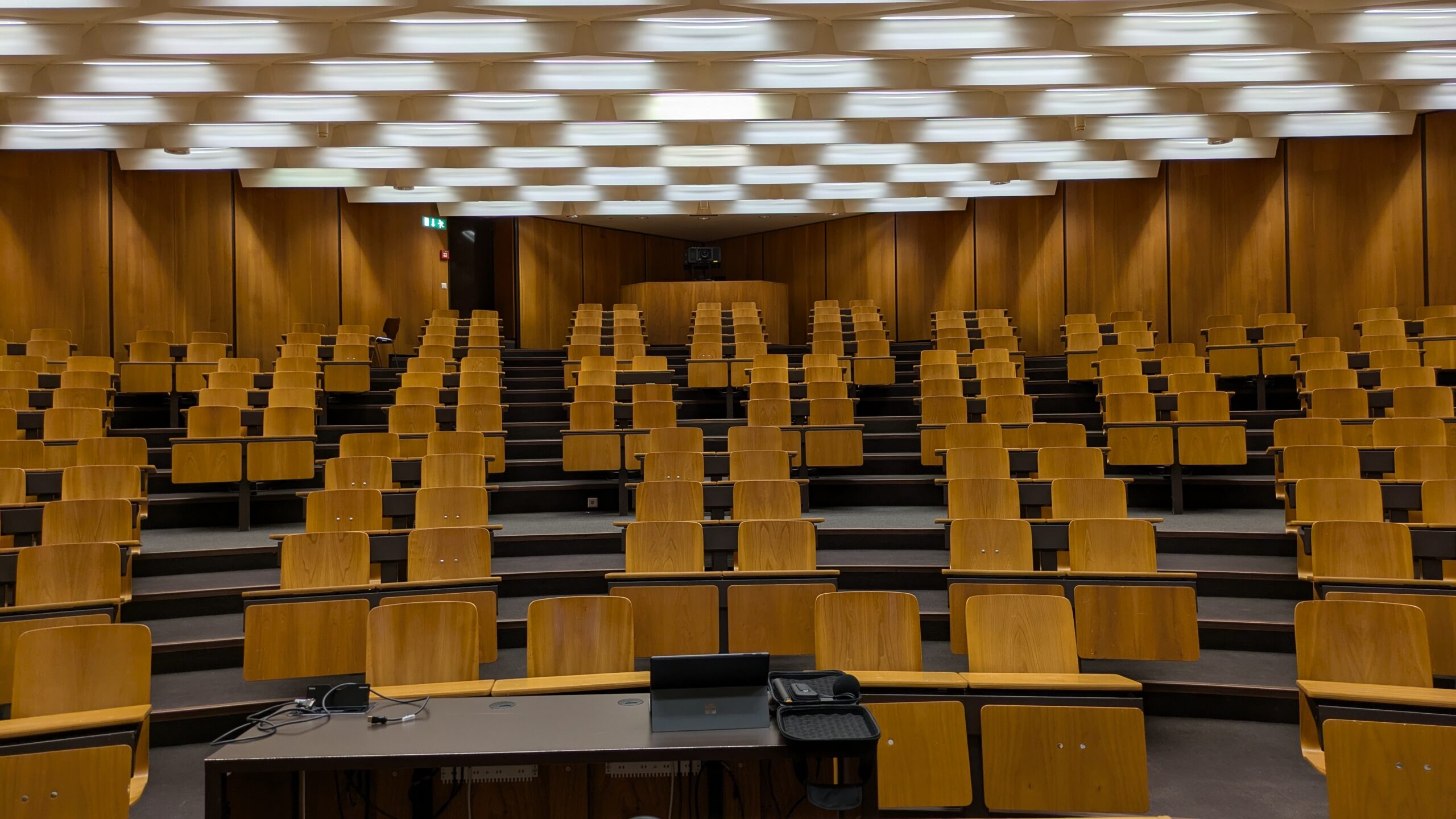HIL E4
This room is a lecture hall with 256 seats and has an area of 300 m².
In my opinion, this lecture hall offers the best acoustics.
The sound is clear with no echo, making the conferences easy to listen to. The sound is crisp and concise, with no noticeable reverb, regardless of where you sit in the room. Background noise (people talking, writing sounds, etc.) is overpowered by the speaker’s voice.
The sound feels warm and lush, and the room is open and acoustically balanced.

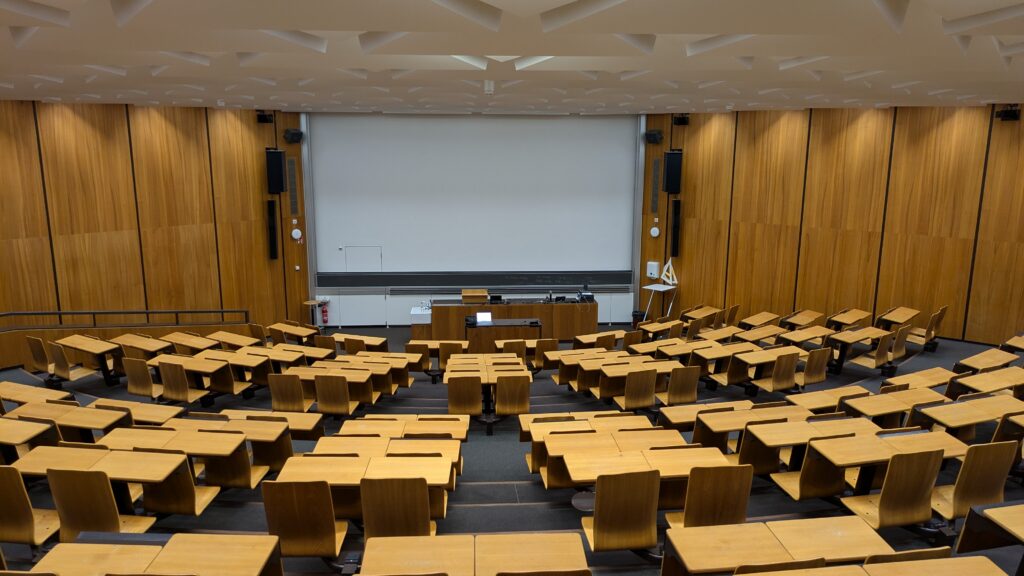
Audio recording
– 0,5 m from audio recorder
– 2 m from audio recorder
– 5 m from audio recorder
– 10 m from audio recorder
– 0,5 m behind audio recorder
– 3 m behind audio recorder
HIL F61
The second room is HIL F61. This is an indoor room, split into three parts: two partitioned spaces with wooden panels and an emergency exit passageway. The two partitioned areas are used for course projects, facilitating group work and studio instruction.
This is an interesting place because when there is noise, it is very hard to understand anything. The wooden panels don’t block the noise but actually increase sound reverberation.
There are several sources of sound: a guest or professor giving a lecture to a large group of people, group discussions involving several people talking together, and smaller group discussions. These discussions don’t always happen at the same time, as there are two studios in the same area. In addition to studio discussions, there is noise from the passageway and the sound of the ventilation system.
When a certain number of people are present, there is always a constant hum or murmur, making conversations very difficult, especially when you are far from the speaker. It’s the same for group discussions, where it’s challenging to locate speakers and understand what they are saying.
The sound feels boomy, echoey, and reverberant. I would describe the space as a noisy room full of buzzing and hissing.

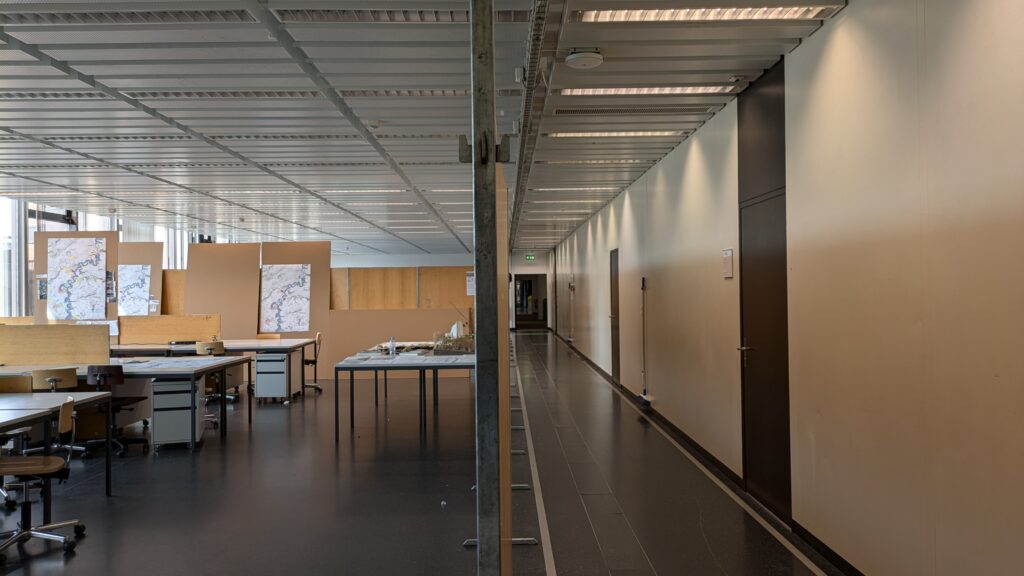
Audio recording
– 0,5 m from audio recorder
– 2 m from audio recorder
– 5 m from audio recorder
– 10 m from audio recorder
– 0,5 m behind audio recorder
– 2 m behind audio recorder
3 Empirical and numerical estimation of room acoustic properties
HIL E4

RT60 = 0,435 x 2 = 0,870s
Estimation of the reverberation time
500 Hz
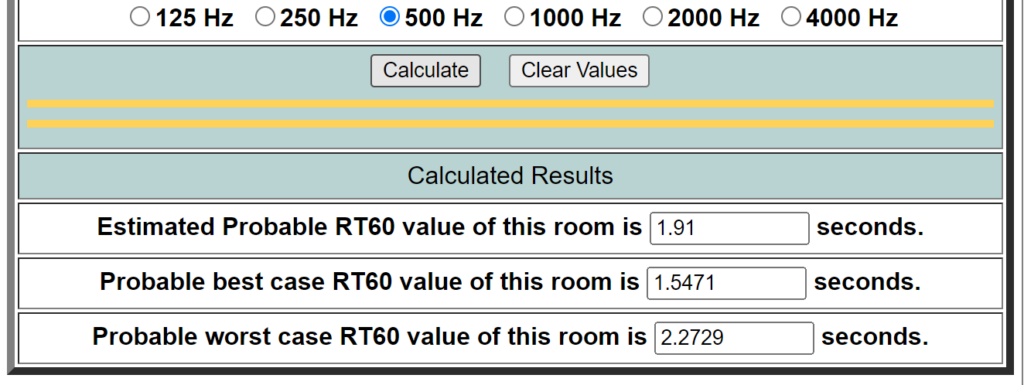
1000 Hz
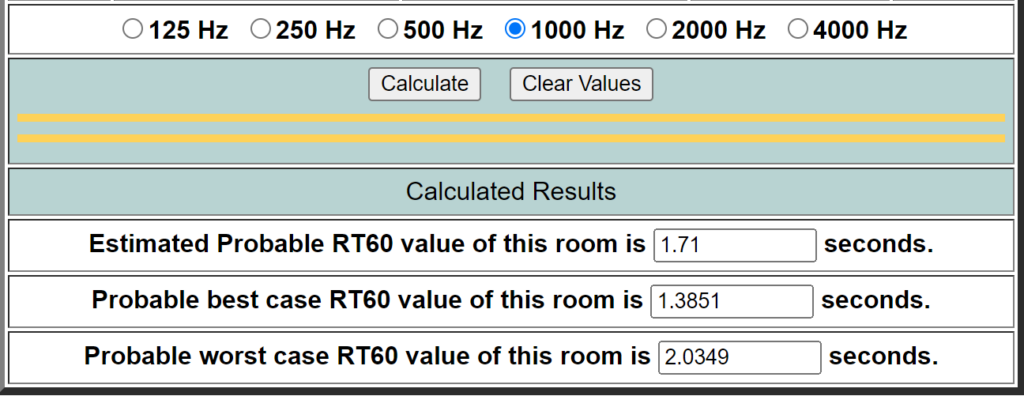
I have a few reservations about these estimates, the shape of the room, for example, is not a rectangle, whereas in the program I had to pretend it was. Or the orientation of the wall panels, which is not parallel to the wall. All these elements, among many others, influence the reverberation time, but are not taken into account in the estimate.
HIL F61

RT60 = 0,307 x 2 = 0,614s
Estimation of the reverberation time
500 Hz

1000 Hz

The estimation of the reverberation time is also complicated, as the HIL F61 room is complex to model in the simulator, notably due to the wooden panels that partition the room without completely separating it. However, the measurements seem consistent with the results from the HIL E4 room. The reverberation time is about twice as long, which confirms the auditory impression.
The RT60 calculation seems strange to me because the reverberation time is shorter than that of the first room. My theory is that the audio recording was unable to capture the end of the reverberation due to the surrounding noise, which distorts the data needed for the calculation.

